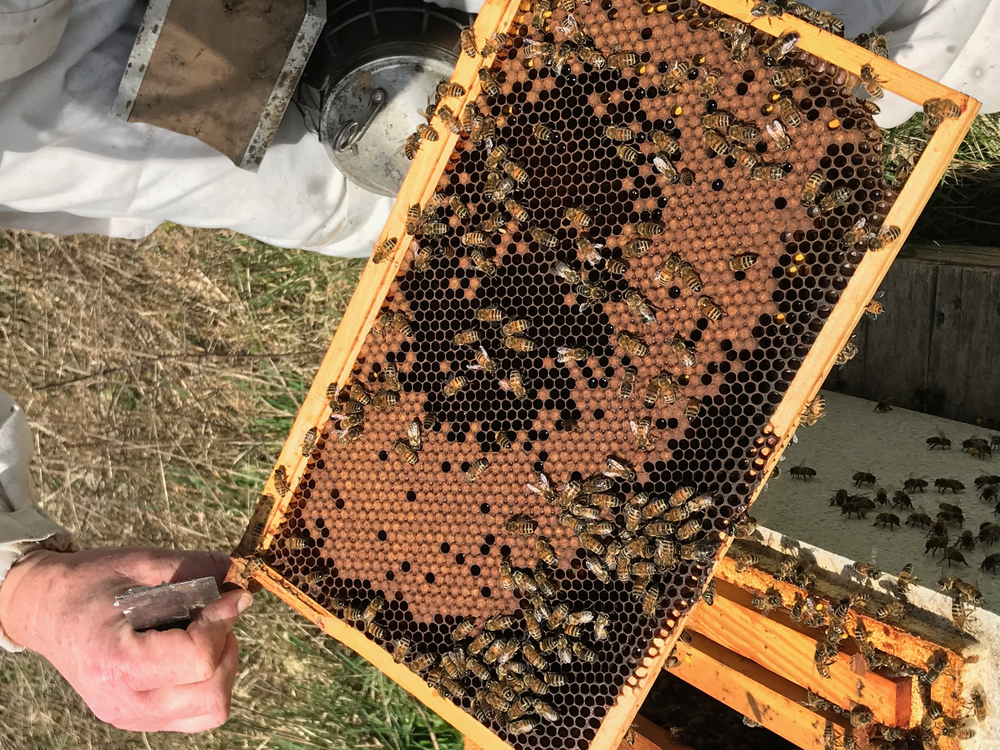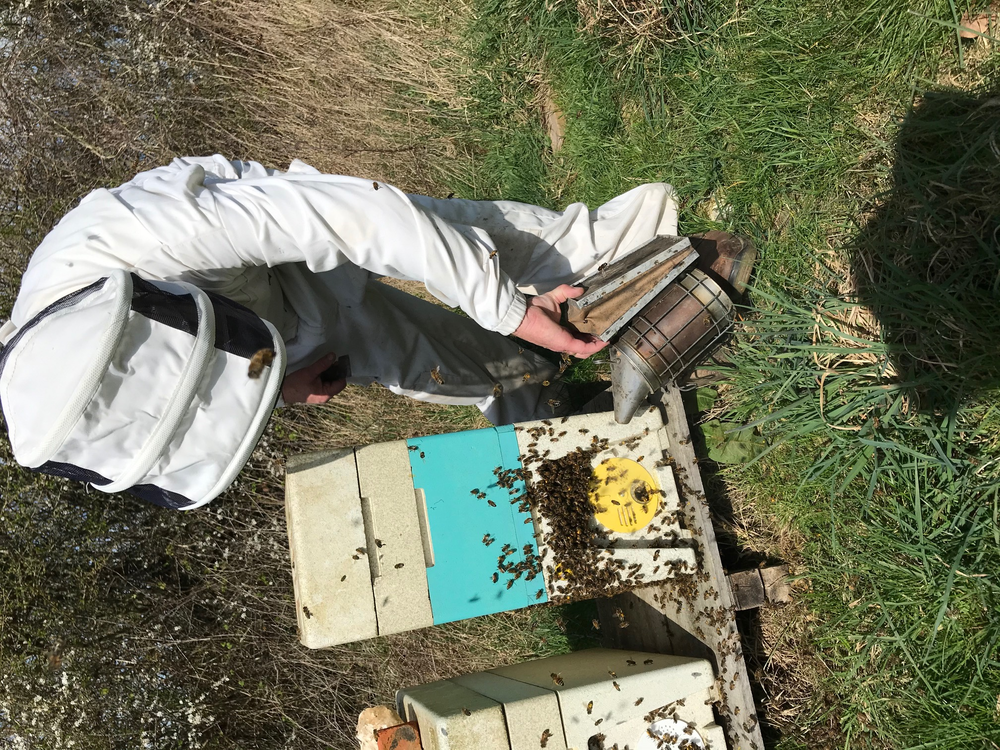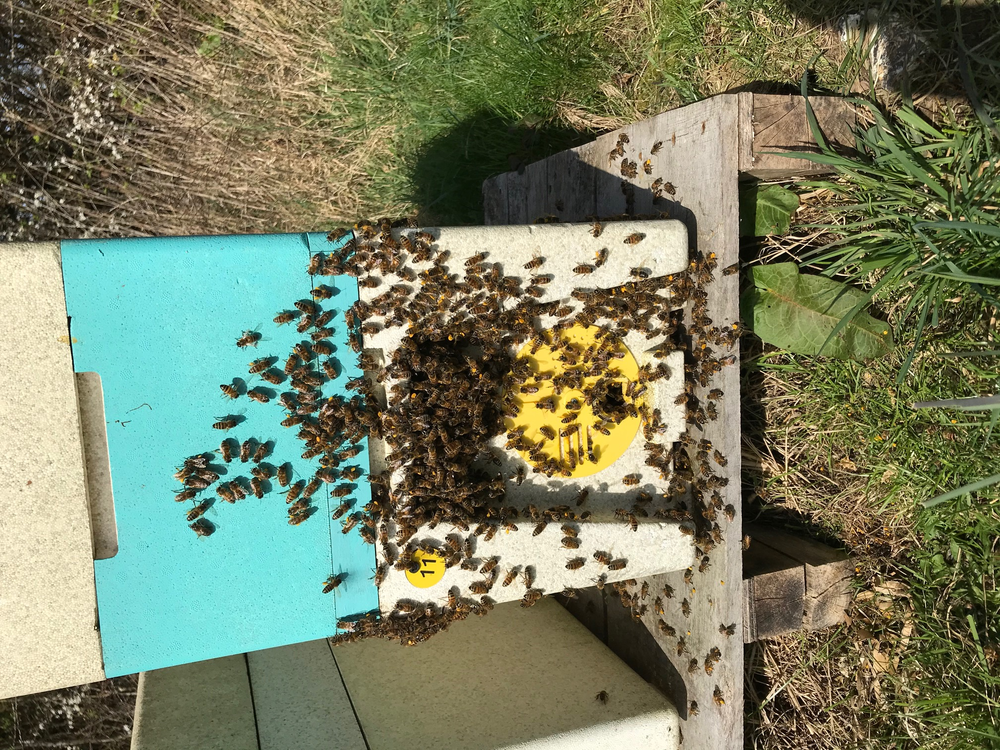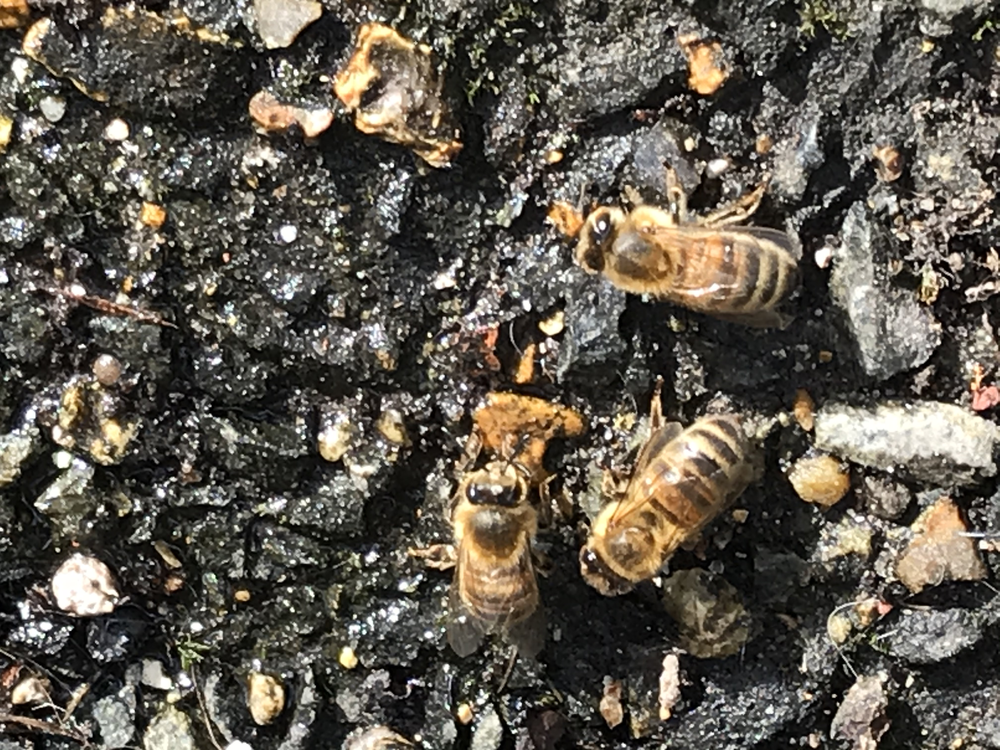pan-european assessment, monitoring, and mitigation of stressors on the health of bees
Progress update shows new observations of PoshBee honeybee hives coming out of winter
This update on the progress of PoshBee WP7 was provided by Matthew Allen of Atlantic Pollination.
Coming out of winter is a critical time for honeybees. The old bees that clustered during winter to keep warm now face a critical challenge. Do they have enough reserves, not only in stored pollen and nectar, but also in their own bodies, to produce the new generation of young bees? Did they cope with exposure to pathogens and parasites? Are the overwintered queens laying consistently and well? What support can the beekeeper provide through this period of fluctuating temperatures and foraging opportunities?

Bee colony.
The photos here show PoshBee partner Robin Dean of Red Beehive Company carrying out the first examinations of the spring on colonies which will be used in the WP7 semi-field study in 2021.

Researcher examining bee colonies.
He reports that the bees are on the whole in excellent condition. The colonies are populous and busy, and have already packed new nectar into combs, and indeed some are already building fresh comb, which is an excellent sign. The frame of brood shows the queen is laying well, the population is expanding and the nurse bees have sufficient food to nurture large numbers of developing bees.

Bee colonies.
Another observation that Matthew Allen has made in early April is of bees gathering beneath a leaky tap to gather water. He suggests that workers are gathering water because there is no nectar flow. "If nectar is available there is excess water to be discarded, and no point in collecting water. So we have the situation where there is no food coming in, but they need water. Why? It is cold, so there is no question of evaporating water to keep the hive cool. There are two reasons, which are connected. One is that the bees are using a lot of stores - they need water to add to the stored honey to make it digestable. Secondly, nurse bees need to produce a lot of dilute brood food to feed the larvae and also maintain a high humidity in the brood area", elaborates Matthew Allen.

Three bees.
The fine weather in the previous period with plenty food from willows and blackthorn stimulated the colonies to get to work and prepare cells for the queen to lay in. Matthew Allen points out that a good amount of brood can be expected.